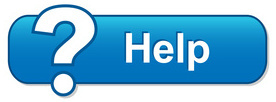Languages and Translations
Our CMS now provides the ability to have published versions of your website in multiple languages.
Separation of Text From Design Elements
Website designers and content creators can continue to create richly formatted pages in the base language of the website. Translated content will no longer become ghost pages with aging brand elements. Our approach is to copy the text nodes (phrases) from your content into our database, and you can then translate these phrases without worrying about design elements. The website template and content design can continue to evolve, and the translations will continue to be replaced where required.
Unique URLs keep Search Engines Happy
Each language version of a page will have a unique URL. This way search engines like google can index each version of a page and understand the language relevancy, and not publish duplicate content. This approach is very powerful for google ranking in other languages, and a much superior approach in comparison to adding a translater widget on to your website.
Automated Translations
You can optionally use google cloud translate to automatically translate all your text nodes into the desired language sets. You can then edit those translations where you feel that you could do a better job, or outsource this work to a professional.
Professional Translations
Our approach allows professional translators to review the automated translations, and save their more professional variations of a sentence. Translators can be given access to only update the translated phrases, and they won't have access to any of your other system functions. Please refer to adding additional administrators
Language Selector Widget
We provide an optional simple widget for displaying the available languages in your page. These links can be styled by a web designer if you want hover / popups etc. When changing languages, the user will remain on the same page, but be taken to the canonical url version of the language desired. We suggest the best location for language selection is in your footer, as most people will have got to the correct page by searching in their own language.
Meta Tags
We take care of building the meta tags for your language variations, so that search engines know exactly where to find the other versions. See below an example of a language meta tag set for a home page. The currently selected page is in Te reo Maori language, and the x-default URL is the primary language. There are also other languages that a search engine might consider.
<link rel="canonical" href="https://www.hawke.org.nz/mi/index.html">
<link rel="alternate" hreflang="ru" href="https://www.hawke.org.nz/ru/">
<link rel="alternate" hreflang="mi" href="https://www.hawke.org.nz/mi/">
<link rel="alternate" hreflang="zh" href="https://www.hawke.org.nz/zh/">
<link rel="alternate" hreflang="x-default" href="https://www.hawke.org.nz/">
